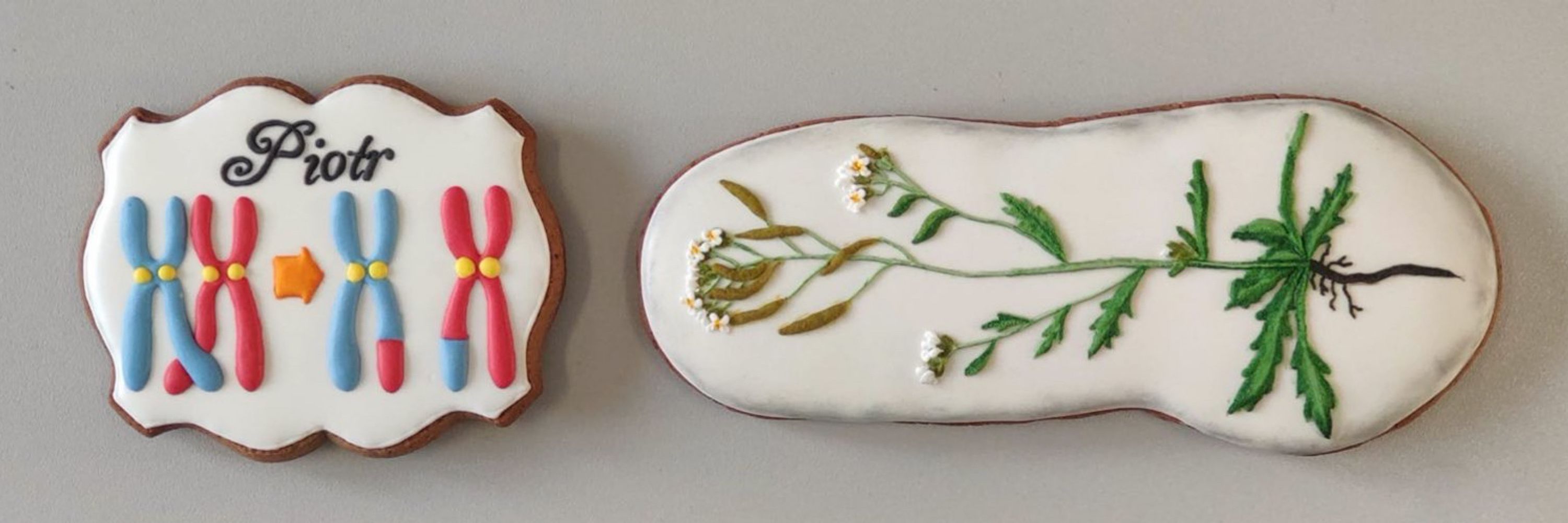
http://dgb.amu.edu.pl


A fantastic study from James Higgins’ group on SCEP3 – a newly identified component of the synaptonemal complex in plants!
Happy that our team could be part of this! 😄🧬
A new synaptonemal complex protein; prevents clustering of crossovers during meiosis, so every pair of chromosomes receives at least one ‘obligate’ crossover.

A fantastic study from James Higgins’ group on SCEP3 – a newly identified component of the synaptonemal complex in plants!
Happy that our team could be part of this! 😄🧬
Don’t miss the chance to join our lab and explore the fascinating world of meiotic recombination 🌿
👉 Deadline: Nov 1, 2025
Join our group in Poznan, Poland to study meiotic crossover recombination in plants 🌱 Highly motivated & enthusiastic candidates are welcome!
📅 Deadline: Nov 1, 2025
🔗 ibmib.web.amu.edu.pl/wp-content/uploads/2025/09/Postdoc_position-2025-Ziolkowskis-Lab.pdf
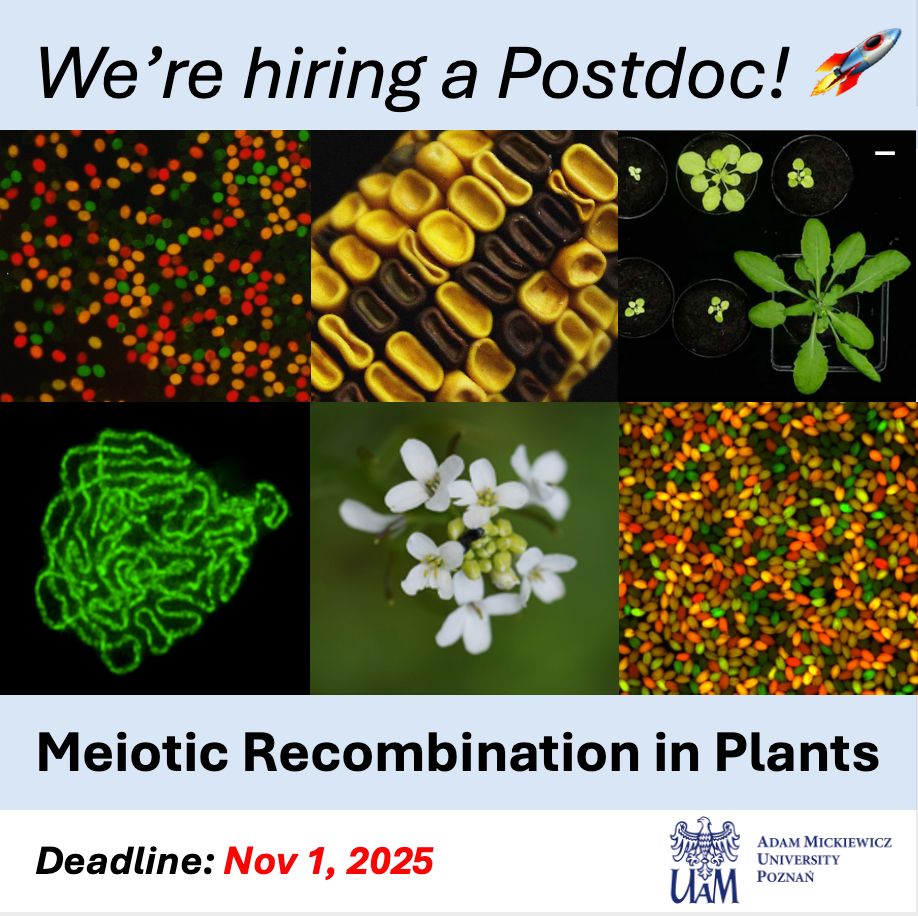
Don’t miss the chance to join our lab and explore the fascinating world of meiotic recombination 🌿
👉 Deadline: Nov 1, 2025
RAD21L cohesin acts as both a 3D genome architect and a transcriptional gatekeeper in the male germline. Its loss disrupts both structure and function—highlighting the tight link between genome folding and gene regulation
www.science.org/doi/10.1126/...

RAD21L cohesin acts as both a 3D genome architect and a transcriptional gatekeeper in the male germline. Its loss disrupts both structure and function—highlighting the tight link between genome folding and gene regulation
www.science.org/doi/10.1126/...
TL;DR: presence of polymorphism (sequence differences between the homologous chromosomes) can *increase* the local rate of recombination in Arabidopsis thaliana, turning cold regions of the genome hot (purple v. grey) !


Join our group in Poznan, Poland to study meiotic crossover recombination in plants 🌱 Highly motivated & enthusiastic candidates are welcome!
📅 Deadline: Nov 1, 2025
🔗 ibmib.web.amu.edu.pl/wp-content/uploads/2025/09/Postdoc_position-2025-Ziolkowskis-Lab.pdf

Join our group in Poznan, Poland to study meiotic crossover recombination in plants 🌱 Highly motivated & enthusiastic candidates are welcome!
📅 Deadline: Nov 1, 2025
🔗 ibmib.web.amu.edu.pl/wp-content/uploads/2025/09/Postdoc_position-2025-Ziolkowskis-Lab.pdf
👉 www.nature.com/articles/s41...

👉 www.nature.com/articles/s41...


), we find the opposite: animals exchange genes more, and for longer, than plants

), we find the opposite: animals exchange genes more, and for longer, than plants
#plantscience
link.springer.com/article/10.1...?

#plantscience
link.springer.com/article/10.1...?
www.jobs.cam.ac.uk/job/51488/
www.jobs.cam.ac.uk/job/51488/
Sexual selection drives the speciation of lineages with contrasting mating systems: www.sciencedirect.com/science/arti...

Sexual selection drives the speciation of lineages with contrasting mating systems: www.sciencedirect.com/science/arti...
It’s repression during heat stress 🥵🌱 is crucial to suppress transposon mobility! 🧬
www.nature.com/articles/s41...

It’s repression during heat stress 🥵🌱 is crucial to suppress transposon mobility! 🧬
www.nature.com/articles/s41...
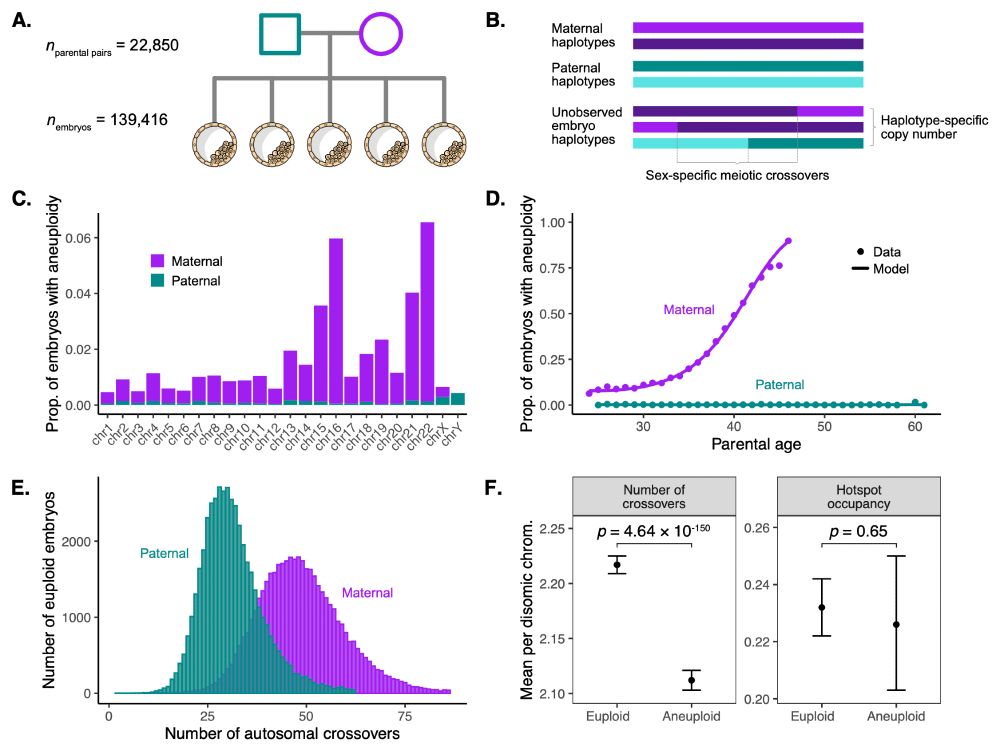
buff.ly/pZZfIso
buff.ly/pZZfIso
In our paper out now in @currentbiology.bsky.social we show that the Atlas blue butterfly has 229 chromosome pairs- the highest in diploid Metazoa! These arose by rapid autosome fragmentation while sex chromosomes stayed intact.
www.cell.com/current-biol...
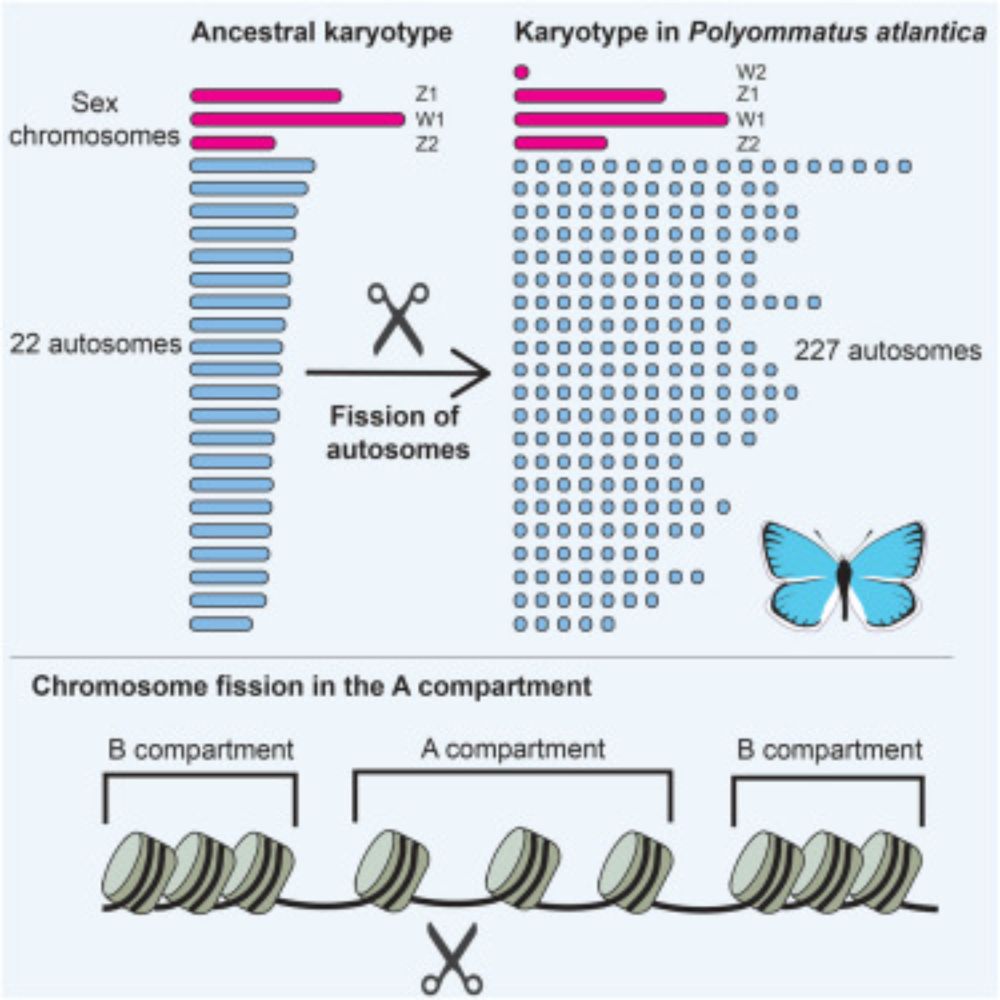
In our paper out now in @currentbiology.bsky.social we show that the Atlas blue butterfly has 229 chromosome pairs- the highest in diploid Metazoa! These arose by rapid autosome fragmentation while sex chromosomes stayed intact.
www.cell.com/current-biol...
Check out our protocol:
bio-protocol.org/en/bpdetail?...
#Arabidopsis #Flower
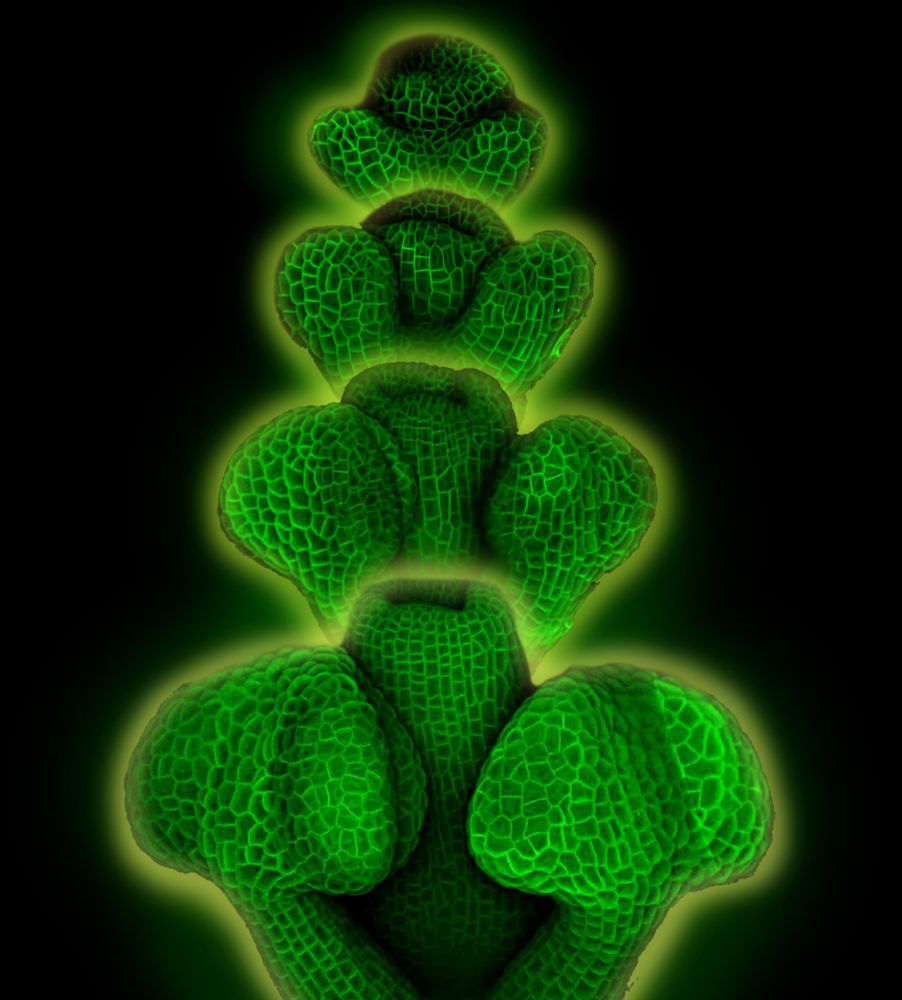
Check out our protocol:
bio-protocol.org/en/bpdetail?...
#Arabidopsis #Flower
With News & Views: "Diversity favoured: heterozygosity attracts crossovers" rdcu.be/eDWKQ



Not one, but two preprints!
Meiotic orientation of kinetochore at meiosis is inforced by...[see below]
www.biorxiv.org/content/10.1...
and
Unlocking meiotic crossovers next to plant centromere
www.biorxiv.org/content/10.1...
#meiosis4ever
#everythingisconnected
a thread👇

Not one, but two preprints!
Meiotic orientation of kinetochore at meiosis is inforced by...[see below]
www.biorxiv.org/content/10.1...
and
Unlocking meiotic crossovers next to plant centromere
www.biorxiv.org/content/10.1...
#meiosis4ever
#everythingisconnected
a thread👇

